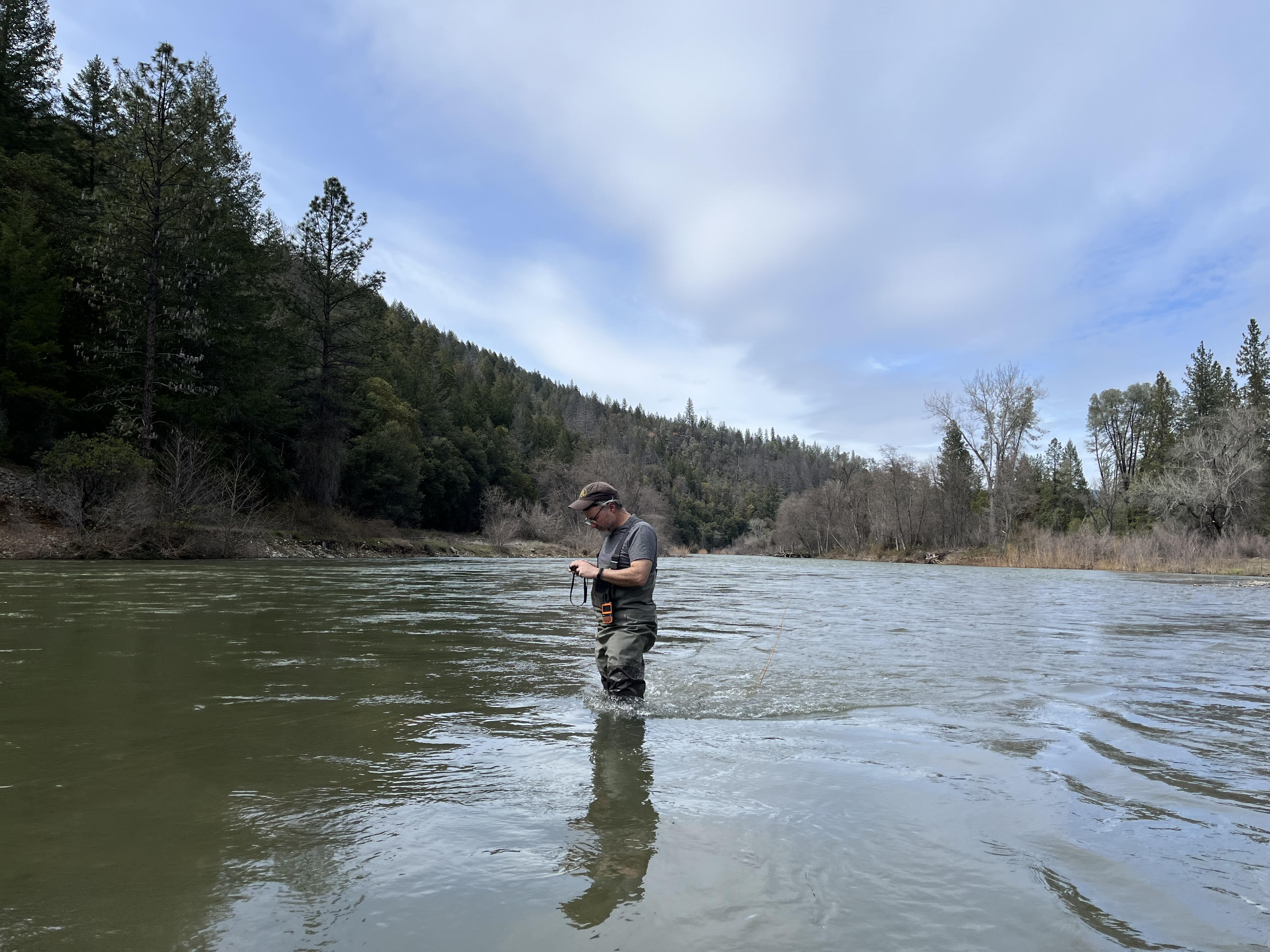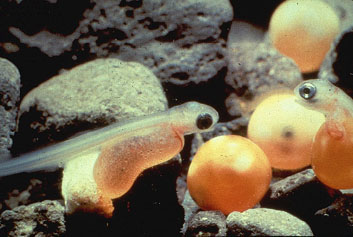
The Program and partners have approved winter-time Environmental Flows for the next few water years. The intent of moving flows into the winter time is to provide flow conditions that Trinity River salmonids evolved to exploit. From a scientific point of view, that intent and the reasons behind it are organized into hypotheses that the Trinity River Restoration Program will be testing throughout implementation of the project.
For the year ahead with the implementation of a new flow management the Program will continue with both short and long-term monitoring projects. Long-term monitoring projects include, outmigrant monitoring (tracking the number and size of young fish heading out to sea), adult escapement monitoring (tracking the number and size of adult fish returning from the sea). Shorter duration studies to examine the flow changes include acoustic monitoring of rock movement, tracking the development of periphyton (algae) on newly inundated floodplains, and investigating the benthic macroinvertebrate (fish food) response to the flows.

Currently in the river, spring and fall run Chinook Salmon eggs are hatching and young fish are starting to emerge. Outmigrant monitoring will be ramping up to count these young fish on their migration. The Program is also preparing for some research on how low floodplains, like the Oregon Gulch inundation areas, develop vegetation and if it differs from our more traditional channel restoration sites.
Last but not least, the Limiting Factors Analysis, is on schedule with initial model development. The project intends to dissect the many limiting factors during the lifecycle of Trinity River Chinook so that the Program can better analyze it’s role and ways to continue restoration efforts more effectively. As the model is developed the task group will assemble the data to parameterize the model, an effort that will continue through 2025. Watch for results of those efforts to come out in summer of 2026!
